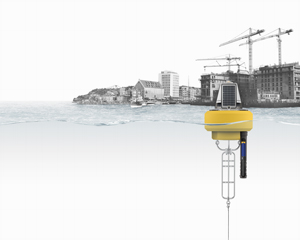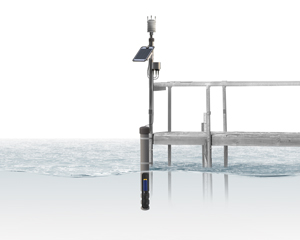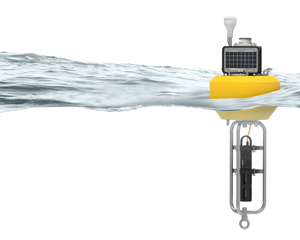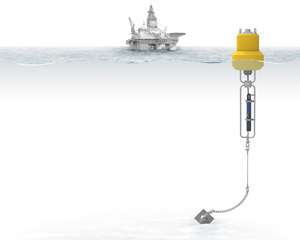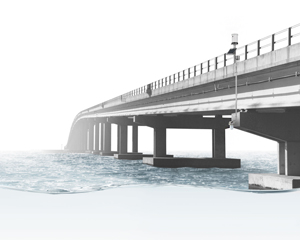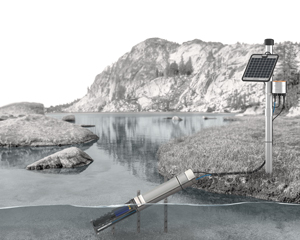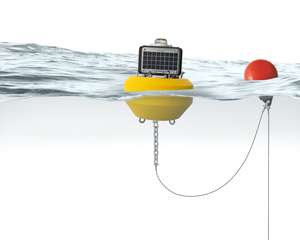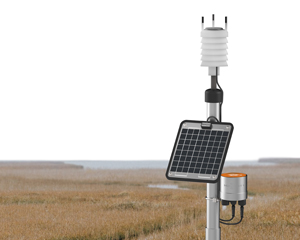Acid mine drainage (AMD), also known as acid and metalliferous drainage, occurs when acidic water is released into the environment from active or abandoned mine sites. This can lower the pH and introduce toxins like heavy metals in a watershed. Continuous monitoring at and near mine sites helps to detect, track the efficacy of mitigating measures, and even prevent AMD.
A refreshing bath to cool off from the hot sun is a favorite pastime for many a beachgoer. Nobody wants their day of fun and sun to turn into a nightmare, but an invisible threat has the potential to do just that: E. coli and other fecal coliform bacteria. Fortunately, NexSens beach E. coli monitoring systems can take real-time measurements and help keep us safe.
Cage aquaculture developments have opened up new possibilities for cultivation of various fish and other aquatic species. Maximizing production, reducing inputs, and minimizing environmental impact all depend on healthy water quality. Real-time monitoring systems deliver the data needed to optimize cage aquaculture operations.
Waterfront construction projects on lakes, rivers, and coastal areas can impact local water quality. Turbidity is often used as an indicator of changes resulting from construction activity, and monitoring requirements are increasingly being set. NexSens real-time turbidity monitoring systems deliver the data necessary to ensure minimal environmental impact.
Oil pollution can cause a wide range of acute and long-term effects on aquatic life and ecosystems exposed to spills and other emissions. NexSens oil detection systems monitor continuously for surface slicks and/or dissolved oils and emulsions, providing quick notice when oil is present so that mitigating measures can quickly be put into place.
Dissolved gases like oxygen, carbon dioxide, and methane are common in surface waters. They play important roles in aquatic ecosystems and impact atmospheric gas concentrations through air-surface flux dynamics. NexSens real-time monitoring systems with dissolved gas sensors can detect acute changes and study long-term cycles and processes.
The Federal Energy Regulatory Commission (FERC) and other agencies have established dissolved oxygen limits for hydropower facility operations to minimize dam impacts on the local aquatic habitats. NexSens dissolved oxygen systems offer a flexible sensor, data logging, and communications platform to monitor these levels in near real-time.
Utilizing pre-existing structures such as docks, piers and bridge pilings cuts down the cost of establishing a real-time monitoring system and simplifies maintenance. NexSens dock monitoring systems are highly customizable with weather, water quality and hydrology measurement instruments.
Dredging is a common practice for removal of contaminated sediment for remediation under CERCLA, commonly called the “Superfund” program, or for maintenance and expansion of ports, harbors and shipping channels. Real-time turbidity monitoring during the dredging operation provides needed data to aid in decision making and ensure minimal environmental impact.
Unlike traditional moored data buoy concepts, drifting buoys facilitate study of oceans by recording measurements as they move freely with currents and weather systems. NexSens drifting buoys or “drifters” collect unique data to enhance our understanding of ocean patterns, track long-term changes, and provide real-time data for forecasting and modelling.
The need to watch, warn, and take action against emergent problems, whether related to maritime accidents, industrial spills or natural disasters, calls for an efficient and reliable emergency response system. In emergency situations, the ability to stay connected and efficiently track conditions is critical and can even mean the difference between life and death.
Early and effective flood warning can help to protect people and infrastructure when severe weather strikes. By combining non-contact water level measurement technology with reliable wireless communications and solar charging, NexSens flood warning systems are easy to install, operate, and maintain.
Living roofs are natural, aesthetically pleasing solutions for decreasing stormwater runoff, reducing energy costs, moderating the urban heat island effect and providing additional habitat for animals in the city. NexSens green roof monitoring systems can help track the health of these urban ecosystems.
Groundwater contamination can be detrimental to irrigation waters, drinking water sources and municipal water supplies. NexSens groundwater monitoring systems provide an in-situ method for tracking water quality and level in real-time, offering insight into these critical resources hidden deep below the surface.
Harmful algal blooms (HABs) are an issue associated with eutrophication, the presence of excess nutrients in water. Rapid growth of organisms like cyanobacteria can deplete oxygen levels, increase stratification, and produce harmful toxins. NexSens automated detection systems can help track HABs and predict when potentially hazardous conditions are forming.
Hydropower plants are important for energy generation, but their presence dramatically changes the surrounding landscape. There are also many factors which affect plant operation and maintenance. NexSens comprehensive monitoring systems can be implemented at hydropower assets both to reduce environmental impact and optimize operations.
Inland lakes are important resources providing habitat, drinking water, recreational opportunity, and more. Human activity and natural processes may threaten lake water quality. NexSens automated monitoring stations detect and provide early warning of acute changes and document long-term trends.
Large lakes and reservoirs are some of the world’s most important freshwater resources, serving crucial roles in drinking water supply, irrigation, transportation, and more. However, they are more threatened than ever by climate change and human activity. Automated monitoring systems deliver valuable information to help protect the health of these vital resources.
Nitrate, phosphate, and other nutrients are increasingly present in surface waters and can cause problems like harmful algal blooms that adversely affect ecosystems and humans alike. Real-time nutrient monitoring with NexSens telemetry systems offers critical insight into the presence of nutrients and resulting effects on water quality over time.
Pond aquaculture is one of the major sources of fish and seafood produced for human consumption worldwide. Pond aquaculture monitoring systems can help to ensure optimal water quality conditions for production, avoid excess resource consumption and environmental pollution, and alert for any rapid changes in conditions.
Ports and harbors are essential for transportation of people and goods throughout the world. To help ensure safe operation, port and harbor monitoring systems can measure weather, waves and currents in near real-time, or turbidity and water quality during dredging and other construction activity to ensure environmental protection.
Water-scarce regions, zones subject to seasonal severe storms, flood-prone areas with control structures, construction sites, agricultural zones and stormwater treatment plants are some of the many areas that can benefit from a rain alert system. The NexSens G2-RAIN is a cost-effective system for providing early notice and tracking the overall intensity of rain events.
Recirculating aquaculture systems (RAS) are a unique and emerging development in the field of aquaculture where fish are raised on land in tanks. Water use is minimized through filtering, treatment and reuse. Success with RAS is therefore dependent on careful management and monitoring using automated water quality measurement systems.
Rhodamine is a red-colored dye detectable by a fluorometer when dissolved in water. It is commonly used for time of travel studies that measure the movement of water. While many studies are short-term and performed with manual sampling, other cases may call for real-time delivery of data over longer periods or from relatively inaccessible locations.
Sediments are a natural part of river ecosystems, and many organisms depend on them for spawning, habitat, or capturing prey. However, large sediment loads can adversely affect ecosystem health. Sediment transport studies can be used to establish baseline sediment concentrations and monitor for acute and long-term changes.
Saltwater intrusion affects coastal areas when saline water infiltrates freshwater resources due to sea level rise, storm surge, canals, pumping of groundwater in coastal aquifers, or other factors. NexSens automated monitoring systems can help to detect the incidence of saltwater intrusion, track long-term trends and provide notice of changing conditions.
Streambed scour is the erosion of sediment at the base of bridge piers, abutments and other underwater structures, ultimately compromising structural integrity. Real-time scour monitoring at these structures can help identify issues and prevent disasters. NexSens offers a comprehensive solution to monitor and alert for scour conditions.
Turbidity measurement is commonly accepted as a surrogate for sediment monitoring because it is convenient and relatively simple. However, some cases may call for more precise measurement of sediment concentrations. For these situations, real-time monitoring systems for total suspended solids (TSS) or suspended sediment concentration (SSC) are available.
Soil moisture is important to agriculture and landscape management and is a frequent topic of research. Advances in sensor technology simplify measurement of multi-point profiles, and NexSens data logging and communication systems relay data for real-time monitoring and tracking of long-term conditions and trends.
Protecting drinking water resources is a primary concern for communities and treatment plant managers. NexSens offers customizable and scalable solutions for monitoring raw water intake from rivers, tributaries, lakes, reservoirs and groundwater wells. Systems are installed inside drinking water facilities and other complexes to monitor water quality.
As stormwater runs off surfaces, it can accumulate and transport pollutants to local waterways. NexSens real-time stormwater systems can be deployed to track both quantity and quality of stormwater runoff, alert for changing conditions, and automatically collect water samples to aid in pollution prevention efforts.
Maintaining oversight of stream and river flows is important in applications ranging from water use management in drought-prone or irrigation-intensive areas to early warning in waterways subject to flooding. Real-time monitoring systems measure flow by recording the water level and mean or index velocity of water flowing through the stream or river.
Streamside or in-river water quality data is valuable for research, assessment, regulation, and environmental impact studies. Continuous measurement provides the comprehensive data necessary to draw definitive conclusions. NexSens monitoring systems are designed to simplify the setup and operation of real-time water quality measurement in streams and rivers.
Monitoring the yearly evolution of temperature stratification is a critical component of lake management and research. Coastal waters and estuaries may also be subject to seasonal stratification. NexSens data buoys and thermistor strings offer an ideal solution for multi-point temperature profiling in nearly any environment.
Power plants, paper and steel mills, refineries, and other large industrial facilities often use water for cooling. Heated process waters discharged back into surface waters can potentially cause thermal pollution. Thermal effluent monitoring systems help ensure sufficient cooling before discharge, thereby protecting aquatic fauna and flora.
Tide gauges measure tidal fluctuations, instantaneous water depths and long-term water depth averages in coastal areas. NexSens automated tide gauge systems utilize the latest sensor technology to deliver accurate, comprehensive data for long-term trend analysis, near and long-term forecasting and alerting of extreme conditions.
Biochemical oxygen demand (BOD), an important wastewater treatment measurement, is often determined via a lengthy test such as BOD5 before treated waters are discharged to the environment. Recent advances now make it possible to measure BOD, COD and other parameters accurately in near real-time.
Water currents impact nearshore fisheries, shipping routes, search and rescue operations, and recreational boaters. They also help shape aquatic ecosystems and the climate in many regions of the world. Monitoring with NexSens systems can detect changes in near real time and reveal patterns and changes developing over time.
Offshore and coastal monitoring brings challenges that differ from traditional protected water monitoring applications. Wave information is critical to boaters, shipping vessels, construction operators and others affected by near-shore conditions. NexSens wave buoy systems make it simple to collect accurate, real-time wave height, period, and direction data.
Weather stations alert to current conditions and provide data for predictive models. Specifying and building a research-grade weather station is straightforward with NexSens data loggers and industry-standard sensors. Real-time data telemetry and flexible mounting options facilitate setup and data collection even in remote locations.
Groundwater drawn from wellfields accounts for a significant portion of drinking water and irrigation supplies throughout the world. NexSens real-time wellfield monitoring systems assist wellfield managers in protecting these valuable resources by tracking water levels and detecting contamination using a flexible suite of sensors and data telemetry options.




